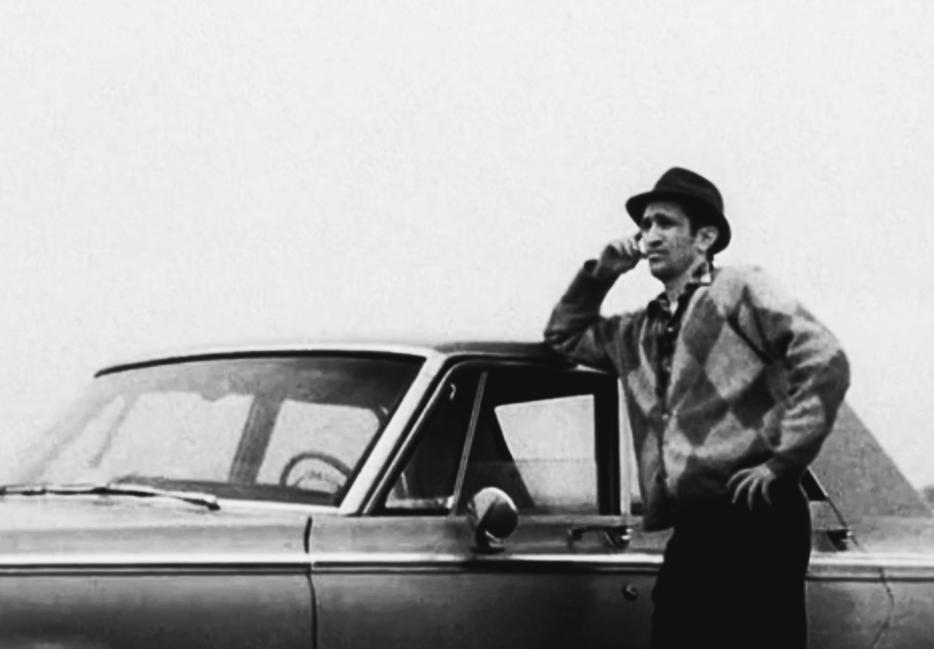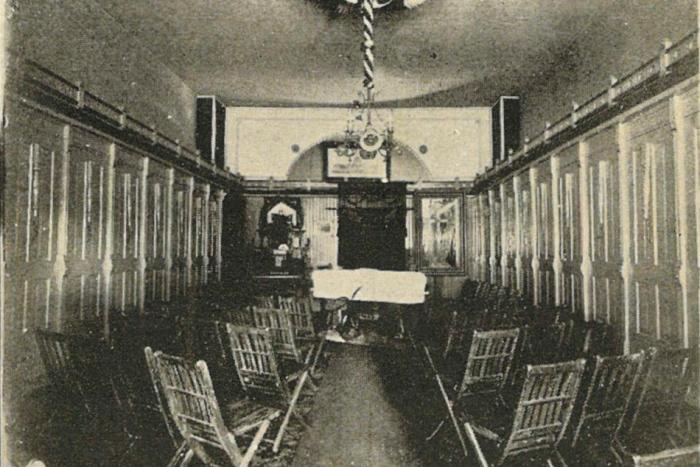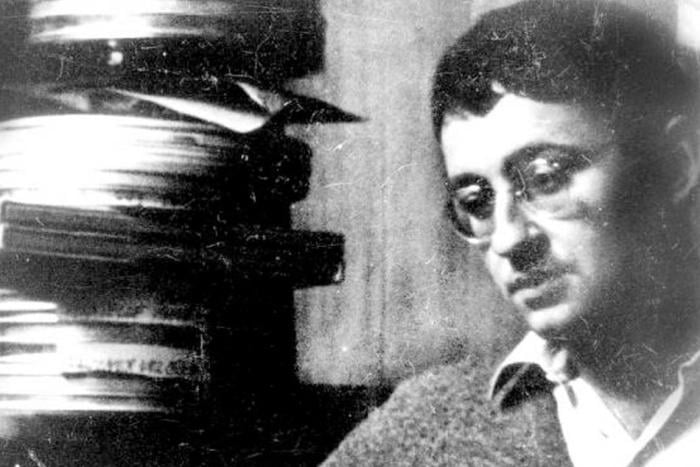In 1984, Jim Jarmusch finished Stranger Than Paradise, the long-gestating feature he’d expanded from a half-hour short of the same name. He’d completed a film degree a few years prior at NYU, an education that culminated in Permanent Vacation, a student film he submitted as his final project. Now 31, a mushroom cloud of white hair on his head, he was already a fixture of New York’s underground No Wave scene. To look at him in old photographs, stone-faced and jean-jacketed, you couldn’t tell if he was a beat poet, a jazz man, or a punk. His movie proved no less elusive—and no less cool. Stranger Than Paradise won the Camera D’Or, the award for best debut feature, at the Cannes film festival in May, and went on to win the Golden Leopard in Locarno and, the following January, the Sundance Special Jury Prize in Park City. Vincent Canby, writing in the Times on its premiere at the New York Film Festival, called it “something quite special,” a film that sought out “the ludicrously sublime in the supremely tacky.” But he was at a loss to characterize it: The film’s humor, he wrote, “is not easily described,” and, indeed, few would be advised to try. A context would only emerge for Jarmusch’s movie when he made more of them. It’s the only way to describe Stranger Than Paradise: It’s a Jim Jarmusch movie.
A comprehensive retrospective of Jarmusch’s films opens this week at the TIFF Bell Lightbox in Toronto, a celebration of a legacy we understand well today. Upon the arrival of Stranger Than Paradise 30 years ago, however, Jarmusch seemed a conspicuous aberration, perhaps even a concerted effort to rebuff the period’s standards of taste. Film historians consider 1984 a landmark year in the development of the American independent picture, and it’s true:Stranger Than Paradise shares with many of the popular indie productions of the year the achievement of having realized a personal vision under the limitations of a shoestring budget. (It was like the Velvet Underground of independent cinema: few saw it, but everyone who did went out and made an indie film of their own.) Still, Stranger Than Paradise, however far removed from the studio system it might have been, shared little in common aesthetically, thematically, or ideologically with the year’s other independent milestones, from Joel and Ethan Coen’s Blood Simple all the way to James Cameron’s The Terminator. Even a pair of masterworks that year from two veteran iconoclasts—Love Streams by John Cassavetes and Paris, Texas by Wim Wenders—don’t much compare, more closely resembling conventional Hollywood features than the idiosyncratic style Jarmusch had instantly established for himself.
“One move that almost always works in the art game,” Chicago Tribune critic Dave Kehr wrote many years ago, “is to take the prevailing aesthetic standards and systematically invert them. If most movies are made in color, make yours in black-and-white. If most films feature slickly engineered, tightly plotted stories... design a narration in which nothing much seems to happen.” He was talking about Jarmusch’s Down By Law, his third feature, which premiered at the Cannes film festival in 1986. Kehr’s analysis is apt: like Stranger Than Paradise before it, Down By Law is a deliberately stilted, highly stylized black-and-white picaresque—plotted, blocked, and edited as if to actively thwart any impression of momentum. Of course, next to other popular independent films of 1986—David Lynch’s Blue Velvet, Leos Carax’s Mauvais sang, Derek Jarman’s Caravaggio—Down By Law seems once again easily distinguished, reminiscent in some ways perhaps of Aki Kaurismäki’s deadpan comedy Shadows in Paradise, but otherwise as singular as the last.
Repetition is a funny thing. If you make two identical films, you’re accused of plagiarizing yourself, and the replication invariably suffers in comparison to the original. But make, say, five identical films, each in succession, and people begin to sink into the rhythm, attuned to the minor differences among the major similarities, and suddenly you’re working not in mimicry but, more appealingly, in variations on a theme.
But that last, for some, proved a source of difficulty: many who’d seen and admired Stranger Than Paradise felt the same qualities that made it unique were diminished through repetition. Observing, in a review upon its American release, that Down By Law’s “calculated eccentricities are very similar—too similar, perhaps” to its predecessor, Kehr wrote that the “self-conscious, formulaic feel” of his latest film makes it seem “as if Jarmusch were imitating himself.” Kehr concluded that not only was Down By Law a failure, but that, more damningly, its failure betrayed a number of potentially irreconcilable faults in Jarmusch’s approach to filmmaking: “Jarmusch’s whole method,” he wrote,
“consists of reversing expectations. The problem with that method is that you quickly begin to expect the reversals; the unpredictability becomes predictable. Jarmusch is a talented filmmaker, with an original sense of humor and a sharp and distinctive visual style, but he won’t be a great filmmaker until he stops approaching his material from the outside. He has formulas, he has methods, he has dramatic ideas and structural devices he knows how to impose. What he doesn’t have is a genuine interest in his characters and situations, a core of commitment that would give his films an inner life as well as an exterior flash.”
Well, repetition is a funny thing. If you make two identical films, you’re accused of plagiarizing yourself, and the replication invariably suffers in comparison to the original. But make, say, five identical films, each in succession, and people begin to sink into the rhythm, attuned to the minor differences among the major similarities, and suddenly you’re working not in mimicry but, more appealingly, in variations on a theme.
This is what happened to Jarmusch, though it wasn’t clear straight away that it would. Mystery Train, his fourth feature, was received with guarded enthusiasm at its Cannes premiere in 1989, where it competed for the Palme D’or. At the time, as Jonathan Rosenbaum described in a piece on Jarmusch’s career in the mid-’90s, the director “seemed at the height of fashion,” adored as much by the alternative press for his art as by the mainstream press for his aura of bohemian cool. Critics expressed the usual admiration for the notable modulations to the Jarmusch framework on offer through Mystery Train—it was still a bone-dry comedy about America as filtered through a tourist, but this time shot in color and splintered into an anthology format—but concluded, again, in a tone of mild disapproval, admonishing Jarmusch for the recalcitrance that had now endured through three pictures.
“It became apparent that Jarmusch’s honeymoon with the American press was over,” ... but this slackening of attention may have been to Jarmusch’s ultimate benefit: liberated from the perverse expectation that he abandon his stylistic or thematic interests in favor of some vague idea of creative development, Jarmusch was free to continue making the films he made best—those indefinable except to call them films by Jim Jarmusch.
David Denby’s assessment in New York Magazine was fairly representative: “The funk that envelops Jarmusch’s characters” in Mystery Train and elsewhere, he wrote, “has an eccentric richness, like the sour-mash fumes thickening the corner of a neighborhood bar.” Ah, but despite the fragrant pleasures afforded by this funk, “one feels Jarmusch has pushed hipsterism and cool about as far as they can go.” Apparently he hadn’t. Jarmusch followed Mystery Train with another color omnibus comedy, Night on Earth, and by this point I think it became quite clear that the once surprising director of Stranger Than Paradise wasn’t about to strike out and do something different any time soon. As Rosenbaum wrote, by the time Dead Man arrived a few years later, “it became apparent that Jarmusch’s honeymoon with the American press was over,” and not even the radical poeticism of a bleak neo-Western could reinvigorate its original interest. But this slackening of attention may have been to Jarmusch’s ultimate benefit: liberated from the perverse expectation that he abandon his stylistic or thematic interests in favor of some vague idea of creative development, Jarmusch was free to continue making the films he made best—those indefinable except to call them films by Jim Jarmusch.
Jarmusch, now in his 60s, looks the same as he did at 31, when Stranger Than Paradise announced the arrival of a singular talent. His latest film, this year’s Only Lovers Left Alive, is about centuries-old vampires lounging around Detroit, and so described it sounds like something of a departure. It isn’t, naturally: Jarmusch’s bloodsuckers are hip to the last, trading reminiscences of historical figures as if they were quite literally the original hipsters. What Only Lovers Left Alive makes abundantly clear, in fact, is that Jarmusch’s style remains so inflexible that even outright fantasy can’t alter it much. What makes the film unmistakably his own is not easily described. The tone, the atmosphere, the pacing, the indelible sense of place—these qualities couldn’t be replicated by anybody else. There’s only one thing to call it: a Jim Jarmusch movie.






